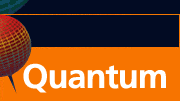CONTACTS
- Coordinator
Diego Dalvit
-
Quantum Lunch Location:
T-Division Conference Room, TA-3,
Building 123, Room 121
 |


Quantum Institute: Visitor Schedule
The Quantum Lunch is regularly held on Thursdays in the Theoretical Division Conference Room, TA-3, Building 123, Room 121.
For more information, contact Diego Dalvit.
September 9, 2005
1:00 PM
Howard Barnum,
CCS-3
Partial Decoherence Maps and Applications in Quantum Information
Abstract
I give an overview of results involving from the LDRD ER "Compuational Complexity and Quantum Entanglement" (L. Gurvits, PI, H. Barnum, co-PI) emphasizing results in which an efficient deterministic classical algorithm is made possible by the "lack of entanglement" of a quantum state associated with the problem. These include checking if certain classes of polynomials are identically zero, estimating certain coefficients and certain Hilbert norms of classes of polynomials, as well as some results on switched linear systems and the best proof yet --- via the proof of a powerful generalization --- of the famed van der Waerden conjecture on permanents. I will then go into more detail about another result concerning entanglement, the determination (up to a possible logarithmic factor) of the radius of the largest ball of unentangled states. The role in these results of a bound we obtained on the induced norm of maps that take a matrix to the matrix multiplied, elementwise, by a positive semidefinite matrix with ones on the diagonal, will be explained. Some other facts concerning, and results using, such maps will also be reviewed, including the interpretation of these maps as precisely those quantum dynamical maps that "partially decohere" quantum states in a fixed basis, and their representation as interaction of the system with a decohering environment. If time permits, the fact that these maps (and the more general class of "unital" maps, those that preserve the maximally mixed state) always lead to a more mixed (in a precise sense which will be described) quantum states, and the application of this to rederive a result that the reduced density matrix of any bipartite unentangled state is less mixed than its overall density matrix, will also be reviewed.
|


